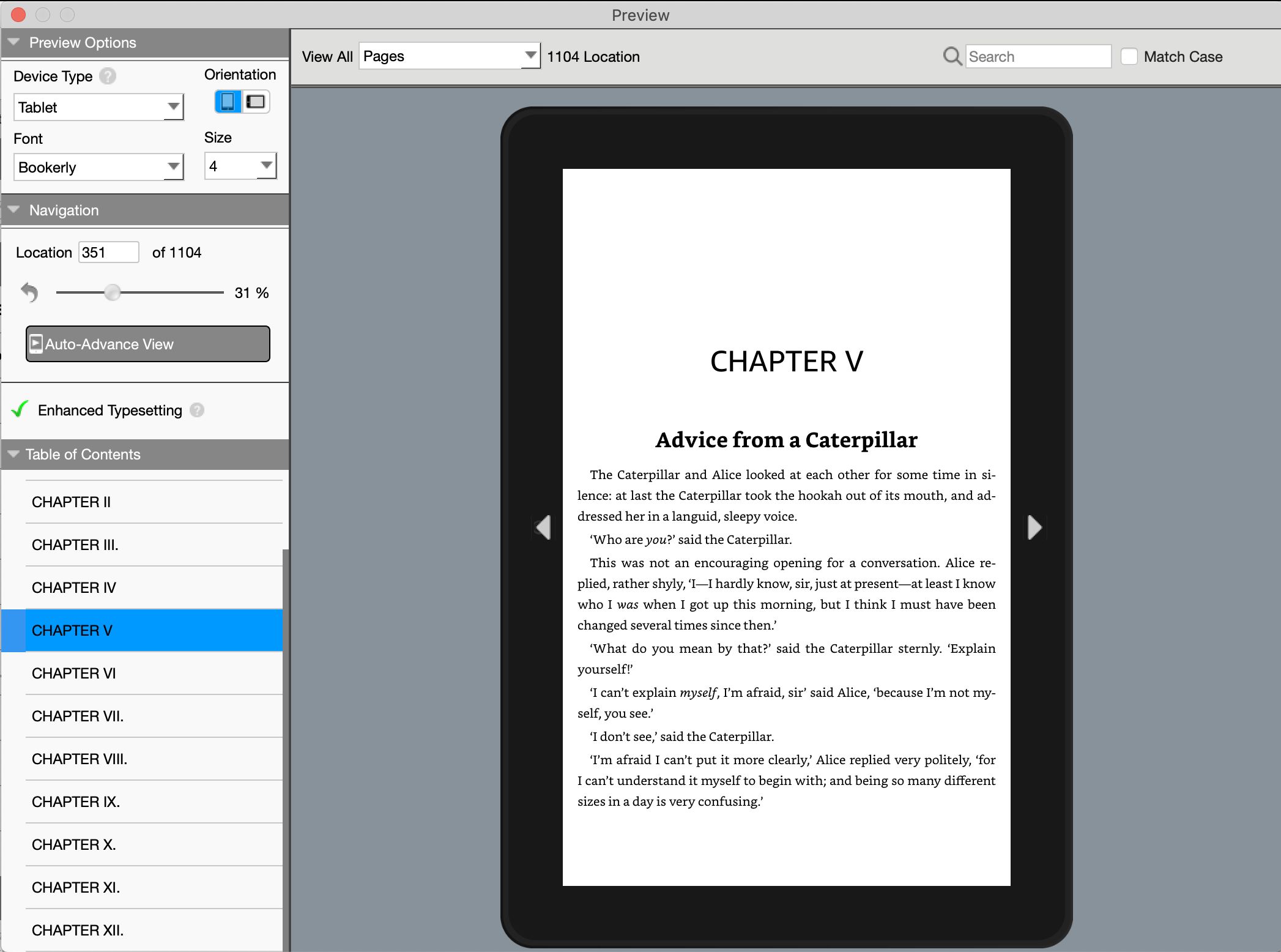Introduction
Welcome to the exciting world of self-publishing! With the rapid advancement of technology, publishing your own eBook has never been easier. Whether you are a seasoned writer looking to expand your reach or an aspiring author with a story to tell, self-publishing provides a unique opportunity to bring your ideas to life and connect with readers worldwide.
Gone are the days when writers had to go through the lengthy and often frustrating traditional publishing process, hoping to catch the attention of a literary agent or publishing house. Today, anyone with a passion for writing and a computer can publish their own eBook and distribute it to a global audience.
This guide will walk you through the process of publishing your own eBook, from choosing a topic to marketing and promotion. It will provide you with the necessary steps and tips to make your eBook stand out and maximize its potential for success. So, let’s dive into the exciting journey of self-publishing and turn your dream of becoming a published author into a reality!
Choosing a Topic
One of the first and most important steps in the eBook publishing process is choosing a topic that will captivate your target audience. The topic you select should align with your interests, expertise, and what you are passionate about writing.
Start by brainstorming ideas and considering what subjects you have deep knowledge and experience in. Think about your hobbies, professional expertise, or personal interests that you would enjoy exploring in more depth and sharing with others.
It’s also crucial to consider the market demand for your chosen topic. Conduct research to identify popular genres, trends, and niches that have a large audience. Remember, while it’s important to write about something you are passionate about, it’s equally vital to select a topic that has a potential market audience.
Consider conducting keyword research to identify popular search terms related to your potential topics. This will help you gauge the level of interest and competition in each field. Tools like Google Keyword Planner and Google Trends can provide valuable insights to guide your decision.
Additionally, think about what unique perspective or angle you can bring to your chosen topic. What fresh insights can you offer that will make your eBook valuable and engaging for readers? Differentiate yourself from other authors by providing unique and original content that stands out in the crowded eBook market.
Lastly, consider your target audience. Who are you writing for? Are you targeting a specific demographic, such as young adults, professionals, or parents? Understanding your target readers’ interests, needs, and desires will help you tailor your content to resonate with them and increase the chances of your eBook’s success.
Remember, choosing the right topic is a critical step in the eBook publishing journey. Take the time to evaluate your interests, market demand, and audience preferences to ensure that your eBook resonates with readers and fulfills their needs and expectations.
Creating the Content
Now that you have chosen your topic, it’s time to dive into the exciting process of creating the content for your eBook. This is where your knowledge, creativity, and storytelling abilities come into play to engage and captivate your readers.
Start by outlining your eBook. A well-structured outline will serve as a roadmap for your writing process, ensuring that you cover all the essential points and maintain a logical flow of information. Divide your content into chapters or sections, and list the main points or subtopics you want to cover in each.
When it comes to writing the actual content, strive for clarity, conciseness, and engaging language. Aim to convey your ideas in a compelling and accessible manner, balancing the use of technical terms and jargon if necessary. Make sure to provide examples, case studies, or anecdotes to illustrate your points and make your content more relatable to readers.
Take the time to research and gather information from credible sources. Support your arguments and claims with facts, statistics, or expert quotes to add credibility and authority to your writing. Additionally, include links or references to external resources that readers can consult for further information on the topic.
Keep in mind that the length of your eBook will depend on the nature of your topic and the depth of information you want to provide. While there is no strict rule, eBooks typically range from 10,000 to 50,000 words. However, focus on delivering high-quality content rather than fixating on meeting a specific word count.
As you write, aim for a conversational and engaging tone that resonates with your target audience. Consider using storytelling techniques, personal anecdotes, and relevant examples to make your content more relatable and memorable.
Lastly, don’t forget to proofread and edit your content thoroughly. Typos, grammatical errors, and inconsistencies can detract from the reader’s experience and diminish the credibility of your eBook. Consider hiring a professional editor or enlisting the help of beta readers to ensure your content is polished and error-free.
Creating engaging and informative content is the core of your eBook. By putting in the effort to craft high-quality content that meets the needs of your target audience, you increase the chances of your eBook being well-received and positively reviewed by readers.
Editing and Proofreading
Once you have finished writing the content for your eBook, the next crucial step is editing and proofreading. Editing is the process of refining and improving the clarity, structure, and overall quality of your writing, while proofreading focuses on finding and correcting any grammatical, spelling, or punctuation errors.
Start by taking a break from your writing, allowing yourself to gain a fresh perspective before diving into the editing process. This distance will help you identify areas that may need improvement and will enable you to approach your work with a critical eye.
Begin the editing process by reviewing the overall structure and organization of your eBook. Ensure that the chapters flow logically and that the information is presented in a coherent and easy-to-follow manner. Look out for any repetitive or redundant content and eliminate any tangents that may distract or confuse readers.
Next, focus on improving the clarity and effectiveness of your writing. This involves tightening sentences, eliminating unnecessary jargon, and ensuring that your ideas are expressed concisely and accurately. Pay attention to your use of transitions to create a seamless flow between paragraphs and sections.
After editing for structure and clarity, move on to proofreading your eBook for grammar, spelling, and punctuation errors. Read through the content carefully, line by line, looking for any mistakes. Consider using grammar and spell-check tools to catch any overlooked errors that might have slipped past your initial review.
It’s also beneficial to have others review your work. Ask for feedback from friends, family, or fellow writers who can provide fresh insights and identify any areas that may need improvement. Consider hiring a professional proofreader or editor to ensure that your eBook is polished and error-free.
Remember, editing and proofreading are essential to ensure that your eBook is of high quality and maintains a professional standard. By taking the time to refine your writing and eliminate errors, you enhance the readability and credibility of your eBook, which will ultimately contribute to its success.
Designing a Cover
They say, ‘Don’t judge a book by its cover,’ but in the world of eBook publishing, your cover plays a crucial role in attracting readers and making a strong first impression. A professionally designed and eye-catching cover can significantly impact the success of your eBook by piquing the interest of potential readers and conveying the essence of your content.
When designing your eBook cover, consider hiring a graphic designer who specializes in book covers to ensure a polished and visually appealing result. A professional designer will have the skills and knowledge to create a cover that captures the essence of your eBook and resonates with your target audience.
Start by discussing your vision and ideas with the designer. Provide them with a brief summary of your eBook, including the genre, mood, and key themes. Share any specific design elements or preferences you have in mind, such as color schemes, fonts, or imagery.
It’s essential to create a cover that aligns with the genre of your eBook while also standing out from competitors. Research the bestselling eBooks in your genre to understand the design trends and elements that appeal to readers. However, remember that your cover should also reflect the unique nature of your eBook and convey its individuality.
Consider using captivating imagery or illustrations that are relevant to your content and create intrigue. A visually striking and professionally designed cover will entice potential readers to click on your eBook’s listing and explore further.
Ensure that the title of your eBook is prominent and legible on the cover. Choose fonts that are easy to read and complement the overall design. Experiment with different typography styles and sizes to find the perfect balance between aesthetics and readability.
Don’t forget to optimize your cover for different devices and platforms. Test how it appears on various e-readers or mobile devices to ensure that the design elements translate well and the cover remains visually appealing across different screen sizes.
Remember, your eBook cover is the first interaction readers will have with your content, so make it count. The right design will create a strong visual identity for your eBook and help it stand out in a saturated market.
Formatting the eBook
When it comes to formatting your eBook, it’s important to create a visually appealing and reader-friendly layout that enhances the reading experience. Proper formatting ensures that your content is easy to navigate, visually engaging, and accessible across different devices and e-reader platforms. Here are some key considerations for formatting your eBook:
1. Choose the right file format: The most commonly accepted eBook formats are EPUB and MOBI. EPUB is compatible with most e-readers, while MOBI is specifically designed for Amazon Kindle devices. Convert your manuscript into the appropriate format using conversion tools or platforms to ensure compatibility.
2. Use headings and subheadings: Organize your content using headings and subheadings to create a clear and hierarchical structure. This helps readers navigate through your eBook and find the information they are looking for quickly.
3. Maintain consistency in fonts and styles: Choose fonts that are easy to read, such as Arial or Times New Roman, and use a consistent font style and size throughout your eBook. Avoid using too many different fonts or font sizes, as this can create a disjointed and unprofessional appearance.
4. Incorporate images and graphics: Visual elements can enhance the reading experience and make your content more engaging. Insert images, charts, or graphs that are relevant to your eBook’s content. Ensure that the images are of high quality and properly optimized for digital viewing.
5. Pay attention to spacing and margins: Use appropriate line spacing and margins to ensure readability. Avoid long paragraphs that can be overwhelming for readers, and break up the text with white space to create a more visually appealing layout.
6. Include a table of contents: A table of contents allows readers to navigate directly to specific chapters or sections of your eBook. Ensure that the table of contents is hyperlinked and accurately reflects the structure of your eBook.
7. Test your eBook across different devices: Preview your eBook on various e-readers, tablets, and mobile devices to ensure that the formatting remains intact and the content is legible. Make any necessary adjustments to accommodate different screen sizes and resolutions.
8. Consider accessibility: Ensure that your eBook is accessible to readers with visual impairments. Provide alternative text for images and use proper heading tags for screen readers to navigate the content easily.
By properly formatting your eBook, you create a professional and enjoyable reading experience for your audience. Attention to detail in formatting not only enhances readability but also reinforces the professionalism of your work, increasing reader satisfaction and engagement.
Choosing a Publishing Platform
Choosing the right publishing platform is a crucial step in getting your eBook out into the world. There are several options available, each offering different features, benefits, and reach. Consider the following factors when selecting a publishing platform:
1. Amazon Kindle Direct Publishing (KDP): Amazon KDP is one of the most popular and widely used platforms for self-publishing eBooks. It allows you to reach a vast audience on Amazon’s Kindle Store, which is accessible worldwide. KDP offers various promotional tools, such as Kindle Countdown Deals and Kindle Unlimited, which can boost your eBook’s visibility.
2. Smashwords: Smashwords is a self-publishing platform that distributes eBooks to multiple online retailers, including Barnes & Noble, Apple Books, and Kobo. It provides a user-friendly interface and offers options for both eBook and print-on-demand distribution.
3. Apple Books: If you want to target Apple users, consider publishing your eBook on Apple Books. This platform allows you to reach millions of potential readers who own Apple devices like iPhones, iPads, and Mac computers. Apple Books offers various marketing and promotional opportunities to maximize exposure for your eBook.
4. Barnes & Noble Press: Barnes & Noble Press, formerly known as Nook Press, is a platform dedicated to self-publishing eBooks for the Nook e-reader. By publishing on Barnes & Noble Press, you can tap into the large customer base of Nook readers and take advantage of their marketing and promotional tools.
5. Self-hosted platforms: If you prefer more control and flexibility, you can choose to self-host your eBook using platforms like Gumroad or Payhip. These platforms allow you to set your own pricing, retain a higher percentage of royalties, and have direct access to customer data.
6. Consider a combination: You don’t have to limit yourself to a single platform. Many authors choose to publish their eBook on multiple platforms to maximize their reach and potential sales. However, be mindful of the exclusivity requirements of each platform, as some may require you to enroll in their exclusive programs for certain benefits.
Before choosing a platform, research their terms and conditions, royalty rates, and any fees associated with publishing. Take into account factors such as the platform’s reach, customer base, marketing opportunities, and ease of use. Also, consider the specific requirements and formats each platform accepts for eBook submission.
Ultimately, the platform you choose will depend on your goals, target audience, and personal preferences. Evaluate each platform’s offerings and select the one that aligns best with your needs and will provide you with the greatest opportunity for success.
Uploading and Publishing
Once you have chosen your publishing platform, it’s time to upload and publish your eBook. This is an exciting step that brings your work to life and makes it available to readers around the world. Follow these steps to successfully upload and publish your eBook:
1. Prepare your eBook files: Ensure that your eBook is properly formatted and meets the requirements of the publishing platform you have chosen. Convert your manuscript into the appropriate file format, such as EPUB or MOBI.
2. Create an account: Sign up for an account on the chosen publishing platform. Provide the necessary information, including your name, contact details, and payment preferences.
3. Enter book details: Fill in the required information for your eBook, such as the title, author name, ISBN (if applicable), book description, keywords, and categories. Craft a compelling and accurate book description that entices potential readers.
4. Upload your eBook files: Follow the platform’s instructions to upload your eBook files. Ensure that you upload the correct file format and that the file size is within the platform’s limitations.
5. Set pricing and royalty options: Choose your preferred pricing model, whether it’s a fixed price or a range of prices. Consider the royalty options provided by the platform and select the one that suits your goals and financial expectations.
6. Review and preview: Take the time to review your book details, including the cover image, description, and any additional metadata. Preview your eBook to ensure that the formatting is correct and that there are no glaring issues or errors.
7. Publish: Once you are satisfied with all the details, click the publish or submit button to make your eBook available for sale. Some platforms may require a review process before your eBook becomes available, so be aware of any potential waiting periods.
8. Set up author profile: Take advantage of any author profile options provided by the platform. Add a bio, author photo, and any other relevant information to establish your author presence and connect with readers.
9. Promote your eBook: After publishing your eBook, don’t forget to promote it actively. Utilize social media, your website or blog, email newsletters, and other marketing channels to spread the word about your eBook’s availability and attract potential readers.
Remember that publishing is just the beginning of your eBook journey. Continuously monitor your sales and reader feedback, and be open to making improvements based on the feedback received. Stay engaged with your readers and continue to promote your eBook to expand your reach and maximize its success.
Setting a Price
Setting the right price for your eBook is a critical decision that can greatly impact its success. While finding the perfect price point can be a balancing act, considering several factors can help you make an informed decision. Here are some key considerations when it comes to setting a price for your eBook:
1. Research the market: Investigate the pricing of eBooks in your genre or niche. Analyze similar titles and examine their pricing strategies. Take note of the price ranges and consider how your eBook compares in terms of content, quality, and perceived value.
2. Consider your goals: Determine the purpose of pricing your eBook. Are you aiming for profitability, exposure, or enticing readers to sign up for your mailing list? Understanding your goals will help guide your pricing strategy.
3. Know your target audience: Consider the purchasing power and preferences of your target audience. Conduct market research or survey potential readers to gain insights into their willingness to pay and their expectations for pricing in your genre.
4. Evaluate length and content: Assess the length and depth of your eBook’s content. Longer or more comprehensive works may be priced higher to reflect the value provided. Conversely, shorter works or those intended as introductory material may be priced lower.
5. Consider production costs: Take into account any expenses incurred during the creation and publication of your eBook. If you invested in professional editing, cover design, or formatting services, consider these costs when setting the price.
6. Experiment with pricing: Consider starting with an introductory or promotional price to attract initial readership and generate early reviews. Later, you can adjust the price based on reader feedback, demand, and performance in the market.
7. Factor in royalty rates: Understand the royalty rates provided by the publishing platform and the impact of different price points on your earnings per sale. Striking the right balance between price and royalty can help you maximize your overall revenue.
8. Monitor and adjust: Regularly monitor your eBook’s sales performance and reader feedback. If you’re not achieving the desired results, be open to adjusting the price to better align with market demand and reader expectations.
Remember that pricing is not a one-size-fits-all approach. It may take time and experimentation to find the optimal price point for your eBook. Be flexible and willing to adjust based on market trends, reader feedback, and your specific goals. Adapt to changes in the market and continue to evaluate and refine your pricing strategy to maximize the success of your eBook.
Marketing and Promotion
Marketing and promotion are essential to bring attention to your eBook and reach your target audience. Even if you have written a remarkable eBook, it’s crucial to invest time and effort in marketing to ensure its success. Here are some effective strategies to consider:
1. Create a compelling book description: Craft a captivating and concise book description that highlights the unique aspects of your eBook and entices readers to click on your listing. Clearly communicate the value and benefits readers can gain from reading your eBook.
2. Utilize social media: Leverage the power of social media platforms to promote your eBook. Build a strong online presence by creating author pages on platforms like Facebook, Instagram, Twitter, and LinkedIn. Regularly share engaging content, interact with readers, and provide updates about your eBook’s availability and promotions.
3. Develop an author website or blog: Create a dedicated website or blog where readers can learn more about you, your writing, and your eBook. Share valuable and engaging content related to your eBook’s topic, guest post on relevant blogs, and engage with other writers and readers in your niche.
4. Seek book reviews: Reviews are a powerful marketing tool. Reach out to book bloggers, engage with influencers in your genre, and encourage readers to leave reviews on platforms like Amazon or Goodreads. Positive reviews can increase the credibility and visibility of your eBook.
5. Offer limited-time promotions: Create a sense of urgency and excitement by running limited-time promotions, such as free or discounted eBook days. Coordinate these promotions with social media announcements and email newsletters to generate buzz and attract new readers.
6. Engage with your audience: Interact with your readers through social media, email newsletters, and even live events or webinars. Respond to their comments and feedback promptly, foster a sense of community, and establish a loyal reader base.
7. Collaborate with influencers: Partner with influencers, bloggers, or podcasters in your niche who have a strong following. Offer them a free copy of your eBook for review or interview opportunities to reach their audience and gain exposure.
8. Run online ads: Consider utilizing online advertising platforms like Google AdWords or social media ads to target your ideal audience. Create compelling ad copy and visuals that grab attention and entice potential readers to click and explore your eBook.
9. Leverage email marketing: Build an email list of interested readers and regularly send them newsletters with updates, exclusive content, and special offers related to your eBook. Email marketing allows you to maintain communication and build a long-term relationship with your audience.
Remember that effective marketing and promotion require consistency, creativity, and engagement. Continuously explore new strategies, analyze their effectiveness, and adjust your approach based on the feedback and data you receive. By implementing a well-rounded marketing plan, you increase your eBook’s visibility and maximize its potential for success.
Tracking Sales and Feedback
Tracking your eBook’s sales and gathering feedback is crucial to understand its performance and make informed decisions for future marketing and improvements. Here are some key aspects to consider when tracking sales and gathering feedback for your eBook:
1. Sales analytics: Most publishing platforms provide sales analytics tools that offer insights into your eBook’s performance. Monitor key metrics such as total sales, units sold, revenue generated, and conversion rates. Analyze these data to identify trends, patterns, and opportunities for improvement.
2. Reviews and ratings: Pay close attention to the reviews and ratings left by readers on platforms like Amazon, Goodreads, or social media. Positive reviews can serve as social proof and encourage other readers to try your eBook. Actively engage with readers, respond to their feedback, and learn from constructive criticism.
3. Reader surveys: Consider conducting reader surveys to gather feedback directly from your target audience. Ask questions about their reading experience, favorite aspects of your eBook, and areas for improvement. Use this feedback to refine future marketing strategies and enhance the quality of your writing.
4. Monitor reader engagement: Track metrics such as page views, click-through rates on your website or blog, and social media engagement. These metrics provide insights into the effectiveness of your marketing efforts and help you understand which channels and strategies are resonating with your audience.
5. Utilize data analytics tools: Explore data analytics tools like Google Analytics to gain a deeper understanding of your eBook’s online visibility and user behavior. Track metrics like website traffic, bounce rates, and conversion rates to optimize your online presence and marketing strategies.
6. Analyze sales patterns: Identify any seasonal or cyclical patterns in your eBook’s sales. This information can help you plan more effective marketing campaigns and take advantage of peak times to maximize exposure and sales potential.
7. Stay informed about trends: Keep up with industry news and trends in your genre or niche. Stay informed about what readers are currently interested in and adjust your marketing strategy accordingly. This includes staying up-to-date with the latest marketing techniques or platforms that can help you gain more visibility.
8. Compare and benchmark: Monitor the performance of similar eBooks in your genre or niche. Compare your eBook’s sales, rankings, and reviews to those of your competitors. Identify areas where you can improve or differentiate your eBook to stand out and attract more readers.
By consistently tracking sales and gathering feedback, you gain valuable insights into the reception of your eBook among readers. This information allows you to make data-driven decisions, refine your marketing strategies, and continuously improve your eBook to meet the expectations and needs of your target audience.
Conclusion
Congratulations on reaching the conclusion of this guide on how to publish an eBook! Throughout this journey, you have learned critical steps and strategies for successfully bringing your eBook to the market. From choosing a topic, creating compelling content, and formatting your eBook to uploading, pricing, and marketing it, you have gained valuable insights into the world of self-publishing.
Remember, publishing an eBook is just the beginning. Once your eBook is available for purchase, continue to engage with your readers, monitor sales and feedback, and adapt your marketing strategies accordingly. Consider leveraging social media, email marketing, collaboration with influencers, and other promotional tactics to maximize visibility and reach your target audience.
While self-publishing an eBook requires effort and dedication, it also offers tremendous opportunities for creative expression, connecting with readers, and financial success. Embrace the journey, learn from each step, and keep refining your writing and marketing skills.
Most importantly, never stop writing. With each eBook you publish, you grow as an author and increase your chances of building a loyal reader base. Embrace the feedback you receive, both positive and constructive, and use it as fuel to hone your craft and deliver even better content in the future.
Remember, self-publishing is an ever-evolving landscape, so stay informed about industry trends, new platforms, and marketing techniques to stay ahead of the game. Continuously challenge yourself to experiment, innovate, and strive for excellence.
Now, armed with the knowledge and skills you have gained, it’s time to take the leap and turn your eBook dreams into reality. Embrace the journey with confidence, passion, and perseverance, as your unique voice deserves to be heard by readers around the world.

























